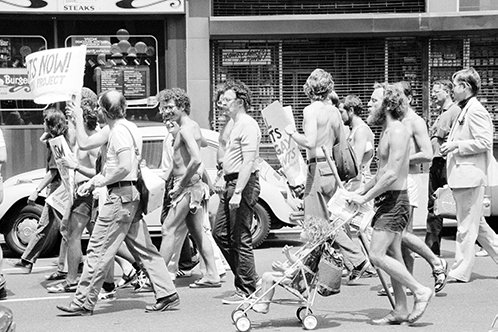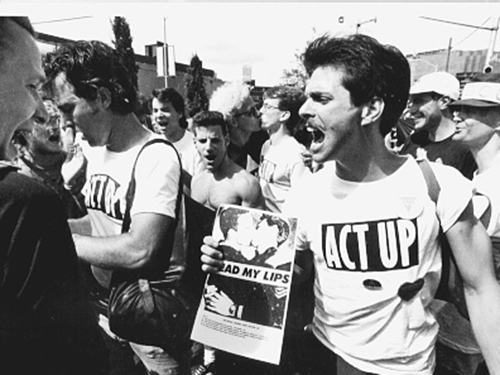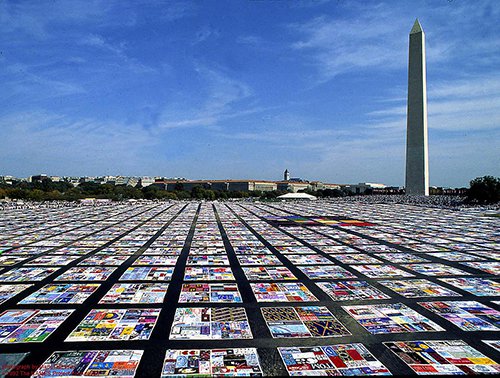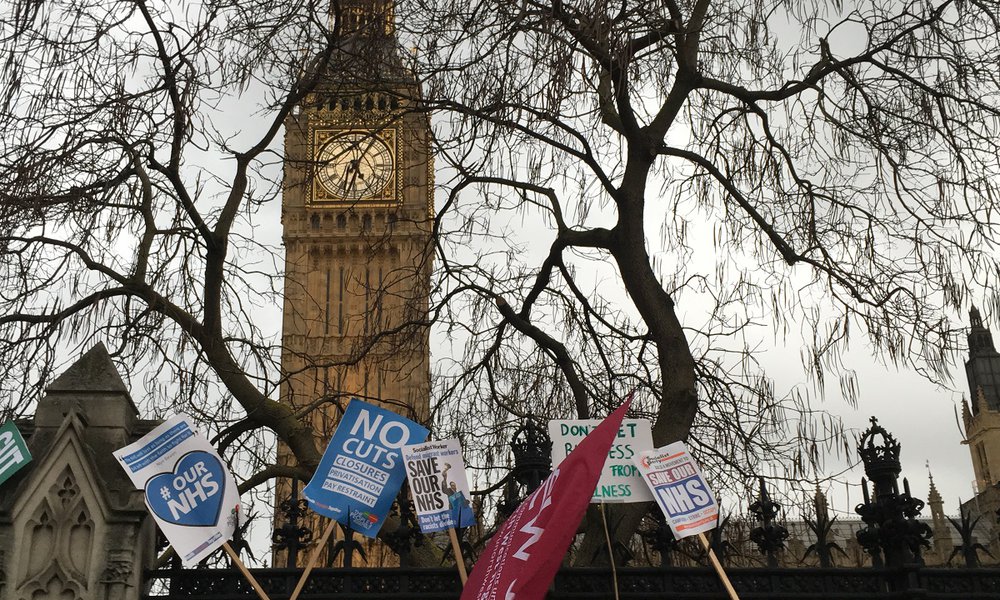The AIDS epidemic’s lasting impact on gay men
by Dr Dana Rosenfeld
19 Feb 2018
Turning points in gay history
In the 20th century, the gay community saw such watershed moments as the targeting of gay people by the psychiatric enterprise and the McCarthy era witch-hunts, the birth of gay liberation, lesbian feminism, and queer culture, homosexuality’s decriminalisation and demedicalisation, the legalisation of gay marriage, and the overturning of bans on gay people serving in the military.
As with all watersheds, these events’ impacts were filtered through such characteristics as gender, ethnicity, class, and age at the time of the event. For gay men and women born before 1930, whom I interviewed in 1995 and who came of age in an era of political, medical, and scientific oppression, the emergence of gay liberation (which, sparked by the 1969 Stonewall and similar uprisings, formed a new celebratory lesbian and gay culture based on the open expression of, and pride in, same-sex relationships) was the most significant event shaping their experience of gay life.

Peak of the AIDS epidemic
While these older gay people were aged 50-70 in 1980, when HIV / AIDS emerged in the west, gay male ‘baby boomers’ (born 1946-1964) were aged 34-16.
![Riot [Stonewall ’69… AIDS Crisis ‘89] (Sticker)](/media/images/Riot_Stonewall_69_AIDS_Crisis_891.width-592.jpg)
For them, the high number of AIDS deaths at the epidemic’s peak (1987-1996) shaped their personal, social, psychological, and community lives, during the epidemic, throughout their life course, and into later years. AIDS killed 324,029 men and women in the USA between 1987 and 1998 (death rates began to drop in 1995, with the introduction of effective anti-retroviral medications in 1996 fuelling this decline).
AIDS killed 324,029 men and women in the USA between 1987 and 1998.
Decimation of gay male baby boomers
As I and colleagues established, the epidemic hit male baby boomers much harder than it did older and younger men, causing high numbers of premature deaths, especially among those aged 25-44 (and, in this age group, among those aged 35-44), with gay men suffering ‘the most AIDS deaths by far at the epidemic’s height’. In the USA, by 1995, one gay man in nine had been diagnosed with AIDS, one in fifteen had died, and 10% of the 1,600,000 men aged 25-44 who identified as gay had died – a literal decimation of this cohort of gay men born 1951-1970.
Silence = Death: Direct action in response to the AIDS Crisis
This was unfolding in a political context intensely hostile to gay men and women, with, in the USA, conservative forces condemning people living with HIV / AIDS as ‘immoral’, and President Reagan notoriously avoiding public mention of AIDS until 1985. Gay men, with others’ support, organised around the HIV / AIDS crisis, forming such direct-action groups as ACTUP. They agitated for better responses from the federal government and the scientific communities, drafting an AIDS patients’ bill of rights, launching information campaigns, and establishing community-based systems of care for people with HIV / AIDS.

Devastating numbers of AIDS deaths in major cities
Unlike the 404,000 USA combat-related deaths in WWII, which were evenly distributed across the country, AIDS deaths were highest in major cities with thriving gay communities with a far higher proportion of gay male residents than the national average. In 1990, AIDS caused 61% of all deaths of men aged 25-44 (born 1946-1965) in San Francisco, 35% in New York, 51% in Ft. Lauderdale, 32% in Boston, 33% in Washington, DC, 39% in Seattle, 34% in Dallas, 38% in Atlanta, 43% in Miami, and 25% in Portland, Oregon.
Older gay men who had lost friends and / or partners during the AIDS epidemic described cities becoming virtual ghost-towns.
Some gay men I interviewed for my British-Academy funded study into the social worlds of older gay men who had lost friends and / or partners to the AIDS epidemic described cities becoming virtual ghost-towns. At the epidemic’s height, caring for a partner with AIDS meant spending significant time in hospitals, hospices, or at home when not at work (if they were still working). Returning to ‘the world’ after a partner’s death was often a return to a world in which many if not most of these survivors’ gay male friends had ‘disappeared’. Recovery from a partner’s death occurred in both a vastly shrunken social network and a devastated community.
Returning to ‘the world’ after a partner’s death was often a return to a world in which many if not most of these survivors’ gay male friends had ‘disappeared’.
Impact on survivors of the AIDS epidemic
The AIDS epidemic’s impacts on this generation of gay men, now aged 54-72, are still being explored. High mortality within tight gay networks have inspired the term ‘multiple loss syndrome’ to capture these deaths’ psychological toll. But these deaths’ impacts vary by, for example, gay men’s degree of connectedness to urban gay communities, and when they entered gay life.
In my British Academy study’s data, these effects were mediated by whether interviewees were ill with HIV / AIDS when they were losing friends and / or partners to AIDS; were HIV / AIDS and / or gay activists during the epidemic, or, if they had been diagnosed with HIV, still working; and had strong ties to biological family.

Effects of age on the experience of living with HIV for older gay men
For older HIV-positive gay men, age intersects with the experience of living with HIV. Older people living with HIV interviewed for The HIV and Later Life (HALL) study described experiencing ‘uncertainties over how HIV, HIV medications, and “normal ageing” intersect to influence physical and mental health; ageism intersecting with HIV stigma to further stigmatise older people living with HIV; threats posed by the stigmatisation of HIV and, for [gay men], homophobia, specifically in relation to the quality of long-term care’ and concerns over ‘the consequences of interruptions to professional careers by HIV’.
Ongoing impact of HIV/AIDS
Gay men diagnosed with HIV pre-1996 lived through often-lengthy periods of ill health, with life-long consequences, and of expectations of imminent and / or premature death from AIDS. The ‘Lazarus effect’ they experienced post-1996 when new medications changed HIV from a fatal to a chronic, manageable condition was itself distressing, as many had left work when diagnosed at the advice of their doctors and found themselves in financial straits due to loss of earnings and limited or no pensions – a situation which, for many, continues today.
Regardless of these internal differences, ‘nearly all older gay men alive today, regardless of their HIV status or when they come out, have been impacted in some way’ by HIV / AIDS. Many of these men were (and continue to be) AIDS activists and / or carers, and have played, and continue to play, a central role in the LGBT community’s history.
Dr. Dana Rosenfeld is Director of the Keele Centre for Ageing Research and a Reader in Sociology at Keele University. She has published on lesbian and gay ageing, the experience of illness and disability, ageing and the life course, and ageing with HIV. She completed a study entitled ‘‘The Lost Generation’: The Social Worlds of Older Gay Male Survivors of the AIDS Epidemic’, funded by a British Academy / Leverhulme Small Research Grant. More recently, she led an MRC / ESRC study on ageing with HIV in the UK.
Image credits:
Header image: “2015 World AIDS Day - Red Ribbon on White House - Washington DC USA 00410” by Ted Eytan is licensed under CC BY-NC-SA 2.0
Gay rights demonstration, NYC 1976
“Riot [Stonewall ’69… AIDS Crisis ‘89] (Sticker)” by Gran Fury (Art and Activist collective) via NYPL
"ACT UP NEW YORK: Activism, Art, and the AIDS Crisis, 1987 - 1993" by Act Up Oral History Project is licensed under CC BY-NC-SA 2.0

